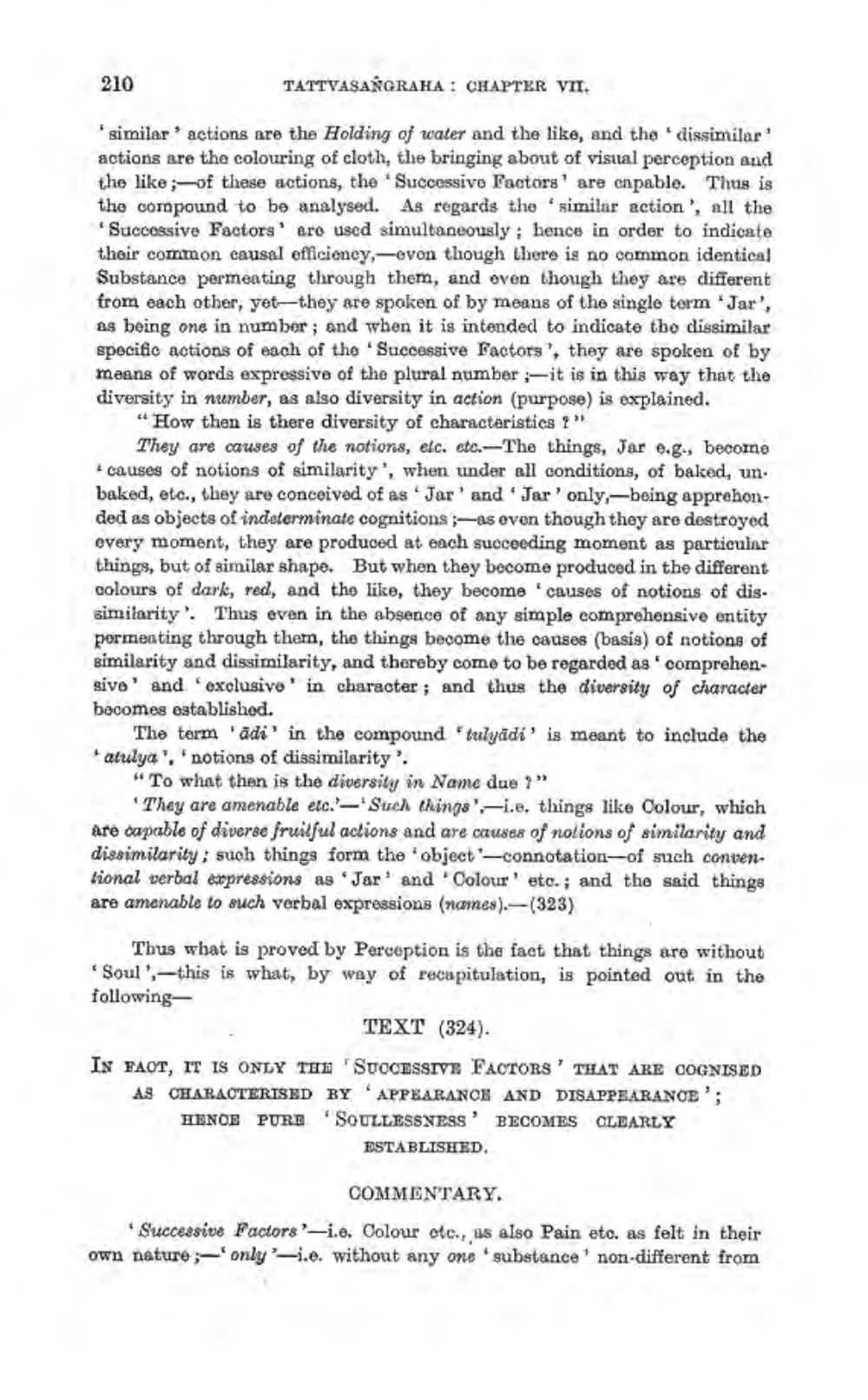________________
210
TATTVASANGRAHA : CHAPTER VII.
similar actions are the Holding of water and the like, and the dissimilar actions are the colouring of cloth, the bringing about of visual perception and the like ;-of these actions, the Successive Factors' are capable. Thus is the compound to be analysed. As regards the similar action', all the "Successive Factors are used simultaneously; hence in order to indicate their common causal efficiency,wovon though there is no common identical Substance permeating through them, and even though they are different from each other, yet—they are spoken of by means of the single term "Jar', As being one in number; and when it is intended to indicate the dissimilar specific actions of each of the Successive factors, they are spoken of by means of words expressive of the plural number ;-it is in this way that the diversity in number, as also diversity in action (purpose) is explained.
"How then is there diversity of characteristics ? "
They are causes of the notions, etc. cto.-The things, Jar e.g., become + causes of notions of similarity', when under all conditions, of baked, un. baked, etc., they are conceived of as Jar' and 'Jar' only,-being apprehended as objects of indeterminate cognitions ;-as even though they are destroyed every moment, they are produced at each succeeding moment as particular things, but of similar shape. But when they become produced in the different colours of dark, red, and the like, they become 'causes of notions of dissimilarity'. Thus even in the absence of any simple comprehensive entity permenting through them, the things become the causes (basis) of notions of similarity and dissimilarity, and thereby come to be regarded as comprehensive' and exclusive' in character; and thus the diversity of character becomes established.
The term 'adi' in the compound "tulyadi' is meant to include the aluya', 'notions of dissimilarity.
" To what then is the diversity in Name due ?"
They are amenable etc. Such things',-i.e. things like Colour, which Are capable of diverse fruitful actions and are causes of notions of similarity and dissimilarity such things form the object-connotation-of such conventional verbal expressions as 'Jar' and 'Oolour' etc.; and the said things are amenable to such verbal expressions (names).-(323)
Thus wbat is proved by Perception is the fact that things are without Soul', - this is what, by way of recapitulation, is pointed out in the following
TEXT (324).
IN FACT, IT IS ONLY THI 'SUOCESSIVE FACTORS' THAT ARE COGNISED A3 CHARACTERISED BY APPEARANCH AND DISAPPEARANCE'; HENOE PURE "SOULLESSNESS' BECOMES CLEARLY
ESTABLISHED
COMMENTARY.
Successive Factors'-i.e. Colour etc., is also Pain eto. as felt in their own nature ;-'only'-.e. without any one substance non-different from




